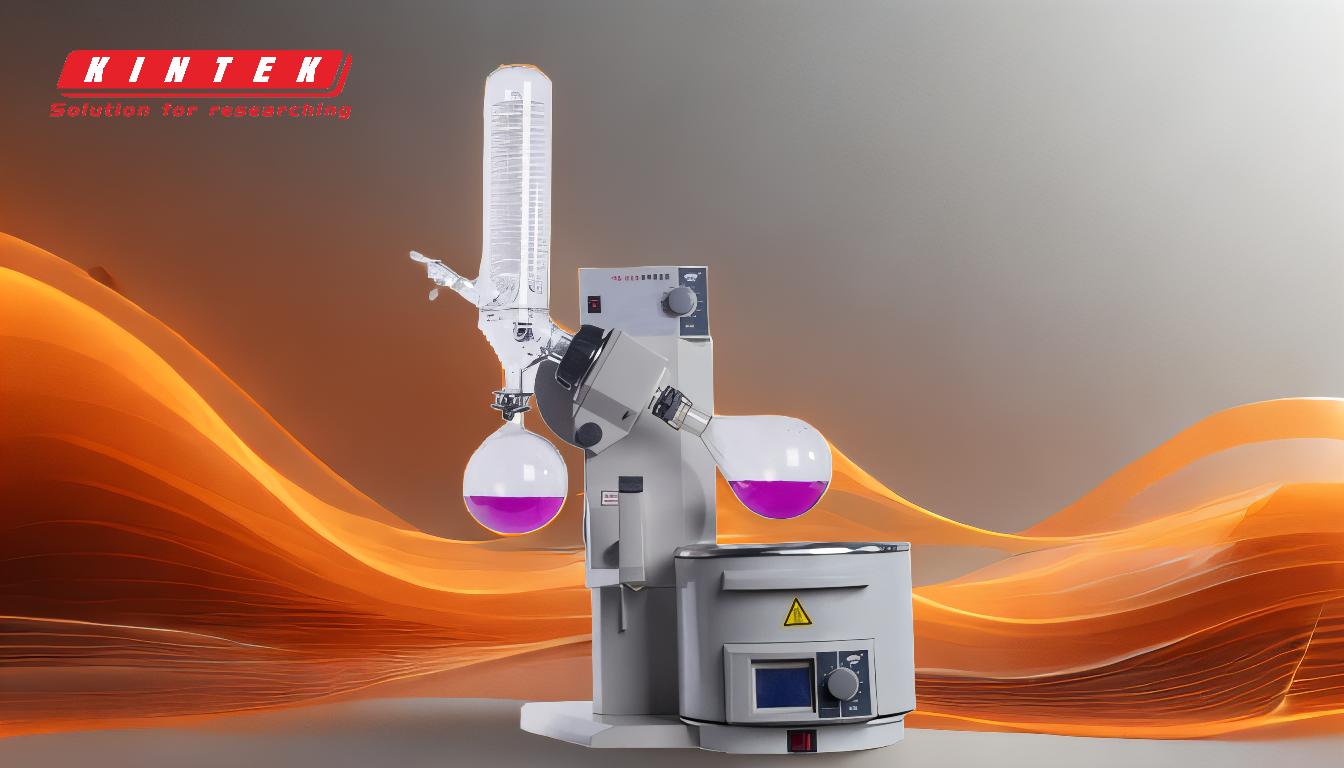The rotary evaporator operates on the principle of vacuum distillation, which separates components based on their boiling points under reduced pressure. By creating a high vacuum environment (around 1 torr), the boiling points of solvents are significantly lowered, allowing for efficient distillation at lower temperatures. The rotating flask creates a thin film of the process media on its inner wall, ensuring uniform heating and increasing the surface area for evaporation. This rotation also prevents bumping and is ideal for volatile or heat-sensitive materials. Additionally, a cooling condenser recovers the evaporated solvent, making the process both efficient and effective for applications like plant extraction, where preserving delicate compounds like cannabinoids and terpenes is crucial.
Key Points Explained:

-
Vacuum Distillation Principle:
- The rotary evaporator relies on vacuum distillation, where the pressure inside the system is reduced using a vacuum pump. This reduction in pressure lowers the boiling points of solvents, enabling distillation at much lower temperatures than under atmospheric conditions.
- For example, solvents like dimethylformamide (DMF) and dimethyl sulfoxide (DMSO), which have high boiling points at normal pressure, can be distilled at 50°C when the vacuum is reduced to 5 torr.
-
Rotation Mechanism:
- The flask in the rotary evaporator rotates continuously at speeds of 150-200 rpm. This rotation creates a thin film of the process media on the inner wall of the flask, which increases the surface area for evaporation.
- The thin film ensures uniform heating and prevents localized overheating, reducing the risk of "bumping" (sudden, violent boiling) and making the process suitable for heat-sensitive materials.
-
Enhanced Evaporation Efficiency:
- The increased surface area from the rotating flask accelerates the evaporation process, allowing for faster separation of solvents from mixtures.
- This efficiency is particularly beneficial in applications like plant extraction, where preserving delicate compounds (e.g., cannabinoids, flavonoids, and terpenes) is essential.
-
Cooling Condenser:
- A cooling condenser, often using dry ice or a recirculating chiller, is used to condense the evaporated solvent. This step ensures the recovery of the solvent in a separate flask, making the process both efficient and environmentally friendly.
-
Applications in Plant Extraction:
- Rotary evaporators are widely used in plant extraction processes, such as cannabis extraction. They effectively separate desirable compounds (e.g., cannabinoids) from unwanted lipids and waxes, resulting in high-quality products like shatter and THCA.
- The low-temperature operation preserves heat-sensitive compounds, ensuring the final product retains its therapeutic and aromatic properties.
-
Operational Parameters:
- The distilling flask is typically filled to 50% volume to allow sufficient space for rotation and evaporation.
- The water bath is heated to 30-40°C, and the condenser temperature is maintained between -10°C and 0°C to optimize solvent recovery.
- These parameters ensure efficient separation while minimizing the risk of degrading sensitive materials.
-
Advantages for Volatile and Heat-Sensitive Materials:
- The rotary evaporator is particularly suited for volatile and heat-sensitive materials due to its ability to operate at low temperatures and under controlled vacuum conditions.
- The uniform heating and reduced risk of bumping make it a reliable tool for applications in chemistry, pharmaceuticals, and botanical extraction.
By combining these principles, the rotary evaporator provides a highly effective method for solvent separation and purification, making it an indispensable tool in laboratories and industrial settings.
Summary Table:
| Key Feature | Description |
|---|---|
| Vacuum Distillation | Reduces pressure to lower boiling points, enabling low-temperature distillation. |
| Rotation Mechanism | Creates a thin film for uniform heating, increasing evaporation efficiency. |
| Cooling Condenser | Recovers evaporated solvents, ensuring efficient and eco-friendly operation. |
| Applications | Ideal for plant extraction, preserving delicate compounds like cannabinoids. |
| Operational Parameters | Optimized for low temperatures (30-40°C) and controlled vacuum conditions. |
Discover how a rotary evaporator can enhance your lab's efficiency—contact us today!










